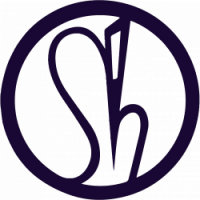Unity 2019.2.7f2
File: E:UNITYProjectX_01
Note: VR Lightweight RP
- Can be used if using primarily baked lighting.
- Uses the lightweight scriptable render (a single pass forward render)
- Used with a VR Device (use with correct SDk for the device)
- Is currently in development and does not offer unity support.
- Uses new shader graph tool
- Has a post-processing stack
- Has a package manager
I have decided not to use VR Lightweight for the VR narrative direction experiments as I feel that a standard 3D project will allow a clean sheet approach to experimentation.
> Change lightbox to solid colour black
> Add Plane with mesh collider
> Add cube (1m)
> Add Capsule with mesh collider
> Add Rigid Body
> Add Camera and move inside capsule
> Move the camera underneath the capsule in the hierarchy
> in Constraints – Freeze rotation y Axis (to stop the character from falling over!)
> Add keyboard controller script (temporary until headset decided)
> change camera skybox to solid black
> Add second cube
> Delete Directional Light
> Add Point Light
> Move point light in front of left cube
> Move point light closer to left cube (the right cube darkens)
> Change intensity to 0.5 (the right cube darkens more)
> Move point light behind left cube (The cube is now a silhouette)
> Increase point light range to 20 (radiating light affects right cube but leaves left cube in silhouette)
> Increase point light to 2 and move above left cube (bounce light not supported on point light)
> Vary shadow as this seems to visually extends cube into foreground (similar to an Arrow)
> Turn off point light
> Add Spotlight
> Move Spotlight above left cube (right cube is completely in darkness)
> equalise both spotlights to intensity 1 and spot angel to 50.
> increase left spotlight angle to 100 (Although casting a wider spot it is less intense on the left cube than on the right) The level of attention is unclear.
> Decreasing White Box intensity on right Box to 0.5 places attention on the left box.
> Turn off right Spotlight and replace with point light placed behind the cube (The right cube is now in silhouette but the Spotlight is on the left cube (Attention seems to be on the left cube)
> Moving the left point light to the right of the cube begins to compete with the left cube as the luminance on the left cube is less bright than the point light’s reflection on the environment plane.
Adding Shadows the the left box better reveals that there is a form there but the clearer lighting on the right box could direct the participants attention.
Next:
1) I can conduct further academic and grey literature to inform my practice based experiments.
2) I can conduct user research to better understand the user experience and gather more detailed evidence. This could be done by isolating the in game play footage images and asking the user whether their attention is drawn to cube A or B (left or right).
















